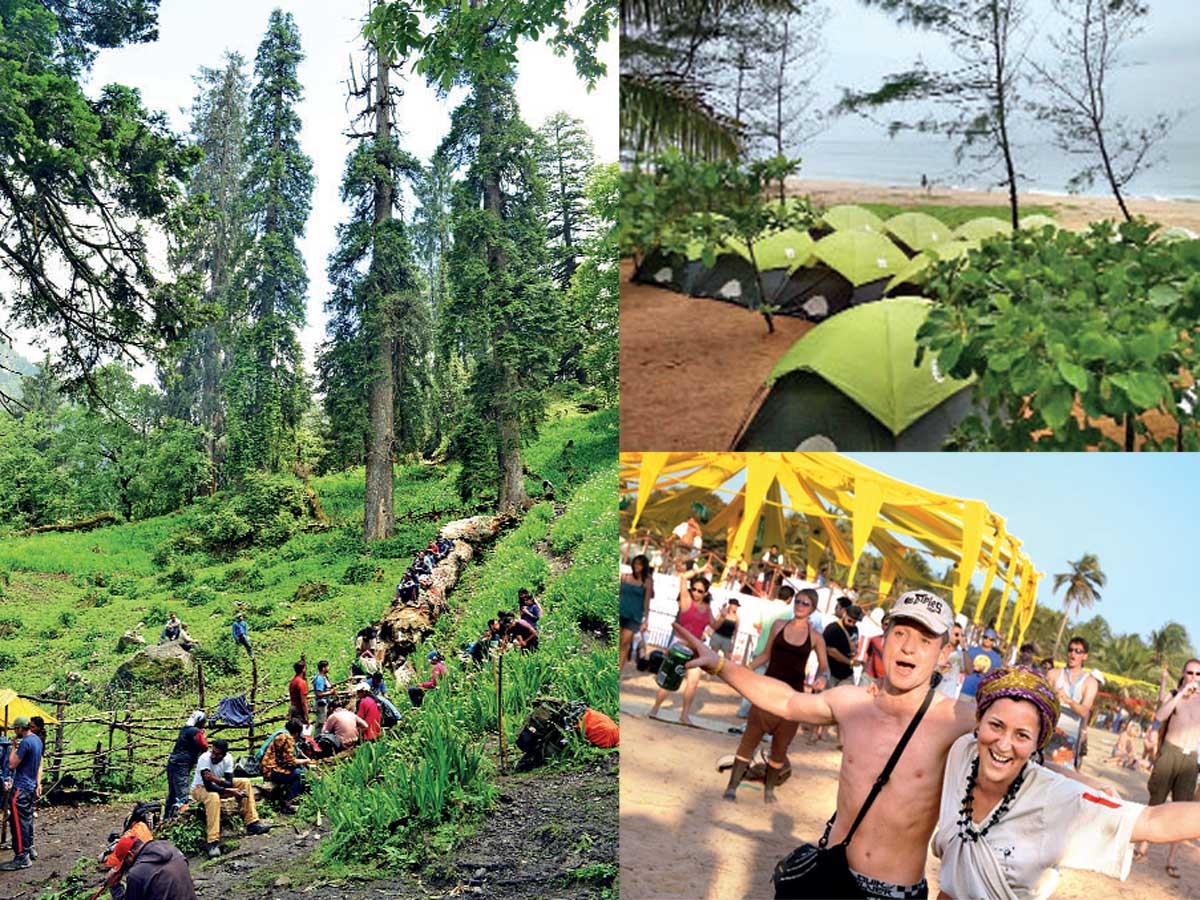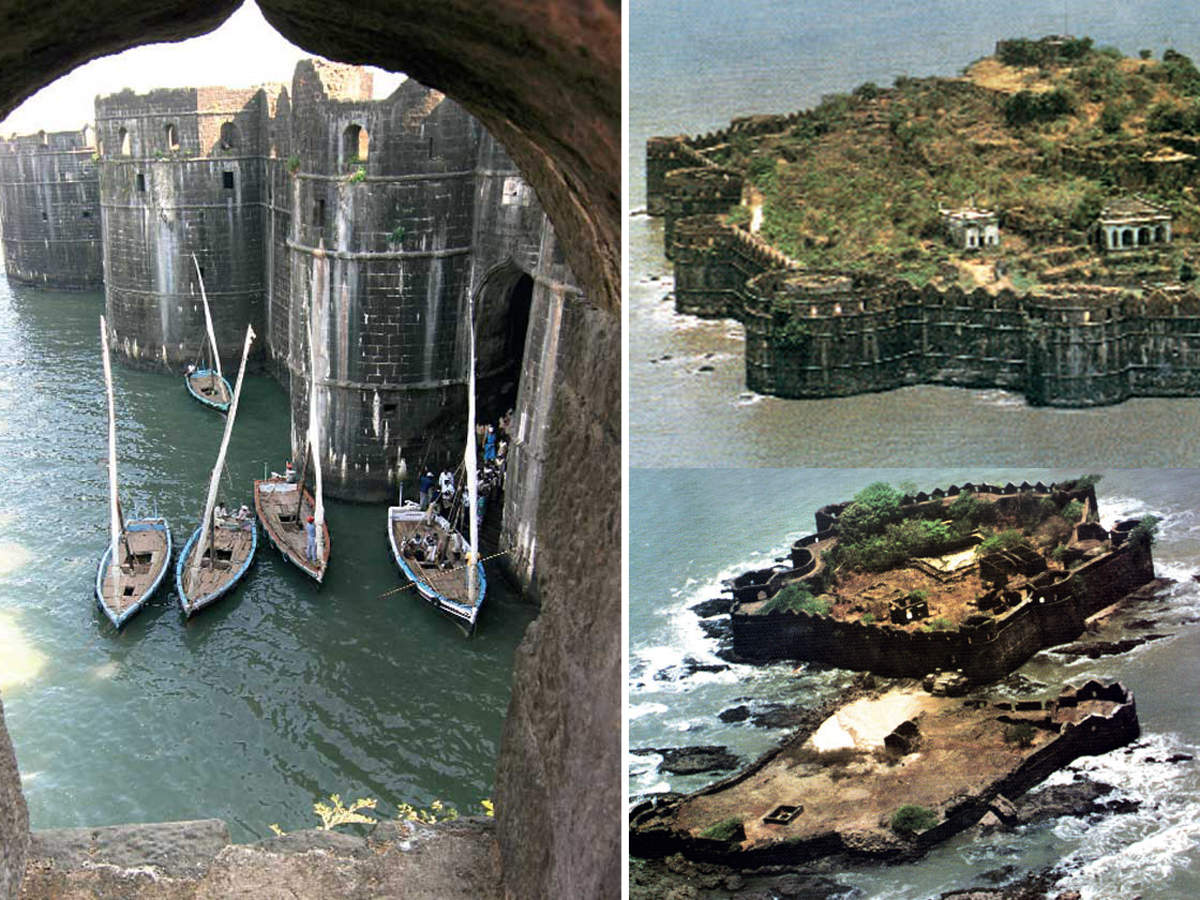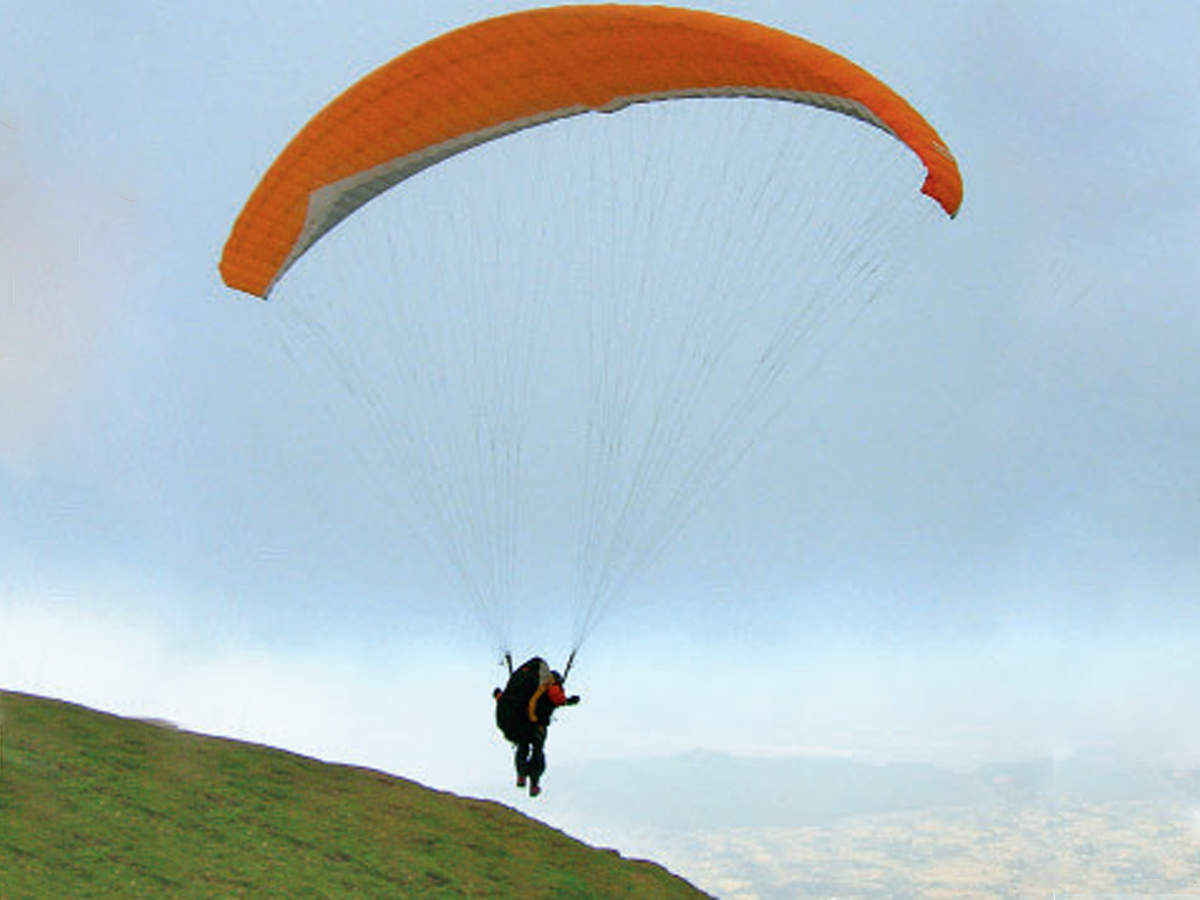Nako, Himachal Pradesh
Instead of Chitkul
The village of Nako lies 150 kilometres from Chitkul in Himachal Pradesh, a rather steep drive up the switchbacks of Kahzigs connecting Kinnaur to Spiti. If Chitkul has somewhat suffered the perils of being on the Indian mountain lover’s map, the village of Nako—set postcard-like by the Nako lake—offers relative anonymity, and glorious views of Himachal Pradesh’s highest peak Reo Purgyil (22,362 feet). This quieter nook of Kinnaur is home to the region’s third-oldest monastery, a wrinkle in time in the far corner of the village. The landscape here, part sinister-part magical with the looming shadows of Garangutan mountains, closely resembles Spiti’s. Expect an abundance of potatoes, apples and green peas on your plate, and cups of mint tea over which to cancel the next leg of the journey. You are here to stay.
How to Go:
Nako in Kinnaur is best accessed via the neighbouring district of Shimla, connected by train and flight to most major Indian cities. From Shimla, local taxis (311 km/9 hr) and HRTC public buses ply the route. A bus journey to Nako would require an overnight stop at Reckong Peo.
–Sambit Dattachaudhari
Tabo, Himachal Pradesh
Instead of Kaza, Spiti

Tabo is home to a model agri-horticulture society promoting evolved, organic methods of farming to support local livelihoods. Photo by: Sambit Dattachaudhari
The fact that the Dalai Lama has chosen Tabo as his retirement home speaks volumes about the beautiful village that is all valley, river and apple orchards. The best apples of the country are said to grow at Tabo, only 49 kilometres from Kaza, the more visible district headquarters of Spiti. Quite astonishing, given it doesn’t have running water for half the year. The village is also home to a model agri-horticulture society promoting evolved, organic methods of farming to support local livelihoods. The Tabo Monastery sprawls over an impressive area, and is famed for its stunning sculptures, wall paintings and stucco images. Owing to its location in the shadow of two mountains, Tabo boasts wizardly night skies, splayed silver, waiting to be photographed.
How to Go:
Tabo in Lahul and Spiti is best accessed via the neighbouring district of Shimla, connected by train and flight o all major Indian cities. From Shimla, one can take the HRTC bus (361 km/11 hr) to Tabo.
–Sambit Dattachaudhari
Rakcham, Himachal Pradesh
That the last village along the Indo-Tibetan border is ultra-touristy is hardly surprising. Chitkul’s popularity is understandable, even expected. But just 10 kilometres to Chitkul’s northwest and before you hit Sangla in Himachal’s Kinnaur region, is a little village called Rakcham (pronounced Rakchcham)—an inconspicuous Himalayan getaway that’s just as beautiful, and fortunately, a lot less bustling.
Surrounded by the gorgeous, snow-capped mountains of the Kinnaur Kailash range, Rakcham’s riches are best explored on foot and on mini hikes. The walk from Rakcham to Chitkul, for instance, is a nice way to take in the large mountains and thick forests, but it’s along the Rakcham-Batseri route where beautiful apple orchards steal your breath away. The village is also good for watching birds, or even to sit and read by the gurgling Baspa River, drowning into its white noise; a sound so pure, so real, that ambient apps can only attempt to recreate. Best time to go? Summers are good to escape from the heat on the plains but locals say come after August, when the flowers here are in full bloom.
How to Go:
From Shimla, hire a private taxi to reach Rakcham (235 km/8 hr). If you intend to use public transport, take an overnight break at Sarahan. From Sarahan, if you find a direct bus to Sangla, take that. If not, take a bus to Rekong Peo, from where you can take a shared jeep towards Sangla. From Sangla, take another bus to Chitkul; Rakcham is on the way.
–Swetha Dandapani
Sainji, Uttarakhand

It is a tradition in the village of Sainji, post harvest, to unleaf the com, bunch it together and hang it outside to dry. Photo courtesy: JW Marrriot Mussoorie Walnut Grove Resort & Spa
Not too far away from the cool climes of Mussoorie, nestled in the Tehri Garhwal ranges of Uttarakhand, lies Sainji village, characterised by an unusual quirk. Outside most homes here hang golden bunches of corn, considered a harbinger of good luck by locals. Corn thrives in the hills of Garhwal and is grown by most households. It is a tradition in the village, post harvest, to unleaf the com, bunch it together and hang it outside to dry. Nowhere else in Mussoorie will you find houses like these.
The newer houses are blue and green in colour. At a 200-year-old wooden house in the village’s centre, two dozen bunches of corn hang in the verandah. Besides the corn harvest, June is an important month of celebration here, for that is when the people come together for an annual fishing festival called Maund. Weeks prior to the festival, a natural powder made from the Timru plant is dusted onto the waters of the Yamuna. The powder is meant as bait for the fish to swim to the surface, and leads villagers to their best catch on Maund.
How to Go:
Dehradun is the nearest station (52 km/2 hr) and airport (76 km/2.5 hr) to Sainji. From here, you can hire a car to the village. Sainji is around 18 km/45 min from Mussoorie. From the village, take a right after the Garhwal English School to get to the “corn row” houses.
–Pranjali Bhonde
Yurutse, Ladakh
Instead of the Sham Valley and Chadar treks

Yurutse is an oasis of beauty in the stark wilderness of snow leopard territory. Photo by: Julien Garcia/ Agefotostock/ Dinodia Photo Library
Hiking in Ladakh is a bucket list dream for most adventure seekers, but many a journey ends up at the popular Sham Valley and Chadar treks in the summer and winter respectively.
Tread away from both, and head towards Hemis National Park in the beautiful Markha Valley to hit the trail to Yurutse, far from the madding crowd. At 13,800 feet, this one-home village (yes, only one) is an oasis of beauty in the stark wilderness of snow leopard territory. With its closest neighbours two hours away in the Rumbak village and the closest motorable road 15 kilometres away, Yurutse is the phrase ‘back of beyond’ come to life. At this altitude, summers are difficult and winters unforgiving. And yet, if you care to look for it, you’ll find that life persists. Rigzin Dorje’s family is the third generation to live in the traditional Ladakhi house, from where he works as a guide and farmer. Hikers sometimes stop here en route the Markha valley trail, but in the winters, it is usually the odd, crazy hiker, a documentary filmmaker, or a wildlife photographer that strays here in search of the snow leopard. Whoever attempts the trail must possess an adequate level of fitness and respect the alien terrain. Those who make it to Yurutse, floating in a sea of majestic, rugged mountains, will leave with the image of this refuge that stands tall like hope, like a lighthouse on a distant island.
How to Go:
From Leh, drive over an hour to Jingchen to begin the 15-km hike to Yurutse, with an overnight stop at a Rumbak homestay.
–Shikha Tripathi
Leh, Ladakh
Instead of following the usual tourist route, watch a game of ice hockey

Ice hockey is more than just a game—it’s a cultural gathering in Leh. Photo by: Gustasp and Jeroo Irani
In the shadow of the Himalayas and flag-festooned monasteries that teeter on mountain ridges, a tense game of ice hockey unfolds; in Leh, 11,500 feet above sea level in the Union Territory of Ladakh, ice hockey is more than just a game—it’s a cultural gathering.
From the first snowfall in December to springtime in March, foreign and local players skim the frozen Karzoo Zing, a pond that becomes a natural ice rink.
The sight of Ladakhis skillfully zipping over ice while brandishing hockey sticks at a bone-chilling -18 °C is not a new one. The Ladakh Winter Sports Club (LWSC) has been hosting tournaments since 1995. Moreover, the Canadian High Commission in New Delhi supported the LWSC’s efforts with the Indo-Canadian Friendship Ice Hockey Cup in 2001 and had its own team—New Delhi Sacred Bulls—participate in the tourney. Participation in the event has become a part of the High Commission’s annual calendar, and this will be the 18th year for its team now known as Delhi Bulls. India too has its own National Ice Hockey teams for both men and women, and with the country’s only artificial ice rink that meets international standards remaining closed in Dehradun, Karzoo Zing has also long been the practice grounds for these athletes. It is heartwarming to visit the practice grounds of the all-Ladakhi National Women’s Ice Hockey Team, who, using borrowed equipment, created history when they won two matches at the IIHF Challenge Cup of Asia held in Bangkok, Thailand in 2017. Typically, scheduled games last 45 minutes with a 15-minute cinnamon tea break before the next two competing teams take the ice. Spectators sit on tiered stands (entry is free) while some of the more enthusiastic supporters perch on tree branches for a better view!
Ice hockey played against the stunning backdrop of the Himalayas and in the rarefied air and lunar landscape of Ladakh is unlike any other tournament in the world.
How to Go:
While Delhi has direct daily flights to Leh, all flights from Mumbai involve a layover in the capital.
–Gustasp and Jeroo Irani
Khuri, Rajasthan
Instead of Sam Sand Dunes, Jaisalmer

At night, the golden sands of the Thar become the cot and starry skies the ceiling in Khuri. Photo by: Bhavpreet Ghai/Shutterstock
Fifty kilometres from the golden city of Jaisalmer, the desert sky blazes all day, metamorphosing into a gleaming planetarium by the night. Welcome to the village of Khuri. While travellers seeking the great unknown
in Rajasthan are often drawn towards the popular Sam Sand Dunes—suited for those seeking creature comforts within tailored experience—Khuri revels in authenticity and freedom from overtourism.
Embark on a long excursion into the desert where the evenings are spent sliding down dunes, chasing a summer-popsicle sun, humming along to folk tunes, and cooking a barebones-yet-delicious meal with your guide. At night, the golden sands of the Thar become the cot and starry skies the ceiling. Unless you want to pass on the chance to see the Milky Way up close, it is advisable to carry along a telescope or to download a stargazing app like SkyView Free.
The experience can be organised through Badal House, a homestay run by loquacious local Badal Singh Ji and his family. Slow travellers would appreciate spending a few leisurely nights at Badal Ji’s beautiful clay-walled hut, being treated to the unforgettable Rajasthani hospitality. The excursion is priced at a modest `1,000 per person, including meals, and is best undertaken between November and March.
How to Go:
Khuri is best accessed via Jaisalmer (50 km/1 hr), connected by train and flight to major Indian cities. Cabs can be hired from both the airport and the railway station.
–Vikas Plakkot
Se La, Arunachal Pradesh
Instead of Khardung La and Rohtang La

Se La Lake, locally known as Paradise Lake, is one of the 101 lakes in the region—all sacred to Tibetan Buddhists in the area. Photo by: Nitish Walia/shutterstock
Compared to oft-tramped passes like Khardung La and Rohtang La, Se La means few visitors and stunning views. Perched at 13,700 feet, it carries National Highway 13 that connects Tawang in Arunachal Pradesh to the country, and is surrounded by snow-capped peaks of the Eastern Himalayas. The pass also cradles Se La Lake, locally known as Paradise Lake, which is one of the 101 lakes in the region—all sacred to Tibetan Buddhists in the area.
Grazing season brings cuddly yaks to Se La, but that isn’t the only reason to visit. Travellers who take the time are rewarded with regular sightings of the pheasant, partridge, Himalayan monal and the Tibetan blackbird. The pass is open throughout the year, unless the region receives heavy snowfall and landslides render movement impossible. Standing at Se La’s formidable altitude, in this less-trodden part of the Himalayas offers, amongst other things, a sense of human insignificance and fragility. Perhaps a common mountain epiphany, but best processed over mesmeric views of Se La, we say.
How to Go:
Se La lies at a convenient 80 km/3 hr drive southeast of Tawang. Salonibari Airport in Tezpur is the closest domestic airport to the pass, about 250 km/8 hr away, and is well-connected to Kolkata and Guwahati.
–Paloma Dutta
Tinchuley, West Bengal
Instead of Darjeeling

Visitors can take quiet walks up and down remote trails running through the hills, interact with villagers, or visit the nearby Tinchuley Monastery. Photo by: Dishabhi/shutterstock
Up the winding road from Silliguri towards Darjeeling travellers can take a short 25 kilometre detour to a charming village of Tinchuley. It is populated by a few local families, one of whom, the Gurungs, own the completely organic Gurgung Guest House. Tinchuley has the most fantastic views—the snow-capped Mt. Kanchendzonga, orange orchards and the Teesta river gurgling in the distance—and is ideal for a non-touristy kind of holiday. Visitors can take quiet walks up and down remote trails running through the hills, interact with villagers, visit the nearby Tinchuley Monastery and take a tour of the Peshok tea estate.
The roads that lead to Tinchuley are narrow and often unpredictable due to inclimate weather and loose terrain. Generally, Tinchuley is slightly colder than Darjeeling as it is not subject to the rampant overtourism and pollution that plague the popular hill station.
While the fragrance of pine cones freshly fallen from conifers and a close proximity to village life is alluring, it is important to note that the facilities are very basic in Tinchuley, making the place better suited to more adventurous travellers.
How to Go:
The closest airport is Bagdogra, and buses ply to Darjeeling regularly from Siliguri. Get off at Takdah, and take a taxi (3 km/10 min). Alternatively, hire a taxi from Bagdogra (75 km/3 hr).
–Maitreyee Chowdhury
Khonoma, Nagaland
Instead of Kisama

Khonoma, a 700-year-old village in Nagaland, is home to the Angami tribe. Photo by: Nomad1988/shutterstock
Travels to the Northeast have now become commonplace, if not synonymous with the popular annual festivals that stir the otherwise untouched, non-commercial landscape. Hornbill in Nagaland’s capital Kohima or, to be specific, in Kisama, a village about 20 kilometres away, is a grand example of this. But, only a little away from the furore of Kisama lies Khonoma, a 700-year-old village, unique in its ability to tell both the history of the warriors of Nagaland and the story of India’s first green village. Home to the Angami tribe, no sit-down with the friendly villagers in this part of Nagaland is complete without a glass of zutho (the local rice beer) and a retelling of the natives’ resistance against the colonial invasion between 1830 and 1880 with spots all over the emerald terraced paddy fields often pointed out as places where the warriors stood guard.
The drive to go green took root way back in December 1998 when hunting and felling of trees was banned in the village of about 3,000, and ecological methods were introduced for farming and all agricultural activities. Result? Today Khonoma is a proud self-sustained community. Every year, the village celebrates its birthday on September 1, an occasion that attracts even those who now live elsewhere. Dressed in traditional attire, the young, old and little ones gather—to feast on a local meal of foraged vegetables and ferns, rice and spicy curries; for upbeat singalongs with the petu and theku (local string instruments); and to tune into tales, old and new, told around a bonfire. Another Northeast fest worth calendaring, we say.
How to Go:
Khonoma is 20 km/1 hr from Kohima by taxi. The closest airport to Kohima is in Dimapur (74 km/3.5 hr), but flight frequency is low. The closest railway station is also Dimapur. You’ll require a special permit to visit Khonoma, which can be acquired from local authorities.
–Stuti Agarwal
To subscribe to National Geographic Traveller India and National Geographic Magazine, head here.
















































